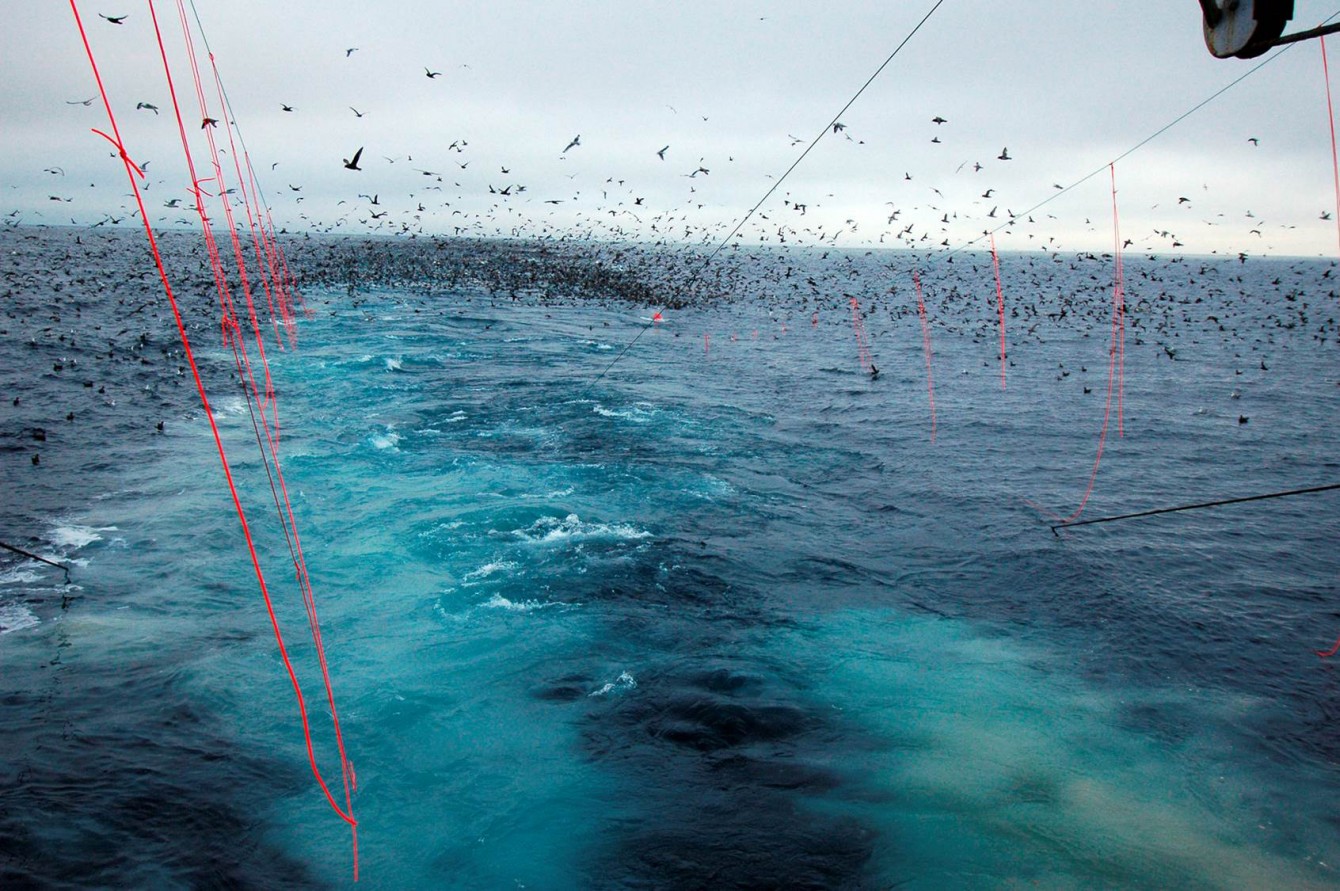UPDATE: Read a popular article on the publication here.
Ed Melvin (Washington Sea Grant, Seattle, Washington, USA) and colleagues have published in the journal Conservation Biology on reductions in seabird bycatch in longline fisheries in Alaska
The paper’s abstract follows:
“Although bycatch of seabirds and other long‐lived species is a critical conservation issue in world fisheries, case studies documenting significant reductions in the mortality of these low‐productivity species in a fishery are rare. We studied progress toward seabird conservation in the Alaskan longline fisheries, one of the largest and most diverse demersal fisheries. We generated annual seabird bycatch rates in 4 target fisheries and all fisheries combined from 23 years of fisheries observer data. We used 0‐inflated negative binomial models to evaluate variables influencing seabird bycatch per unit effort (BPUE) in 2 target fisheries. Following adoption of streamer lines, at first voluntarily and then mandatorily, seabird BPUE was reduced by 77‐ 90%, preventing mortality of thousands of birds per year. Despite this, BPUE increased significantly in 2 of 4 target fisheries since streamer lines were adopted. Although night setting yielded significant reductions (74‐97%) in seabird BPUE and significant increases (7‐11%) in fish catch per unit effort over daytime setting, nighttime setting increased the BPUE of Northern Fulmar (Fulmarus glacialis) by 40% and nontarget fish species by 5–17%. Thus, best practices to prevent seabird mortalities in longline fisheries varied by species assemblage and fishery. Our results inform global efforts toward fisheries bycatch reduction by illustrating that successful conservation requires fishery‐specific solutions, strong industry support, constant vigilance in analysis and reporting observer data, and ongoing outreach to fleets, especially to vessels with anomalously high BPUE.”


Bird-scaring lines deployed behind Alaskan longliners, photographs by Amanda Gladics & Ed Melvin
See also here.
Reference:
Melvin, E.F., Dietrich, K.S., Suryan, R.M. & Fitzgerald, S.M. 2019. Lessons from seabird conservation in Alaskan longline fisheries. Conservation Biology doi.org/10.1111/cobi.13288.
John Cooper, ACAP Information Officer, 15 February 2019, updated 21 February 20219

 English
English  Français
Français  Español
Español